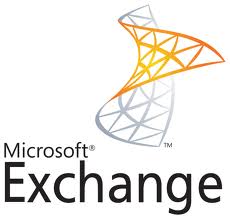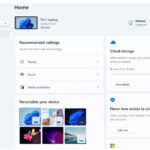
Автор (режиссер): CBT Nuggets
Жанр: Обучающие видео-уроки
Продолжительность: 25:08:41
Год:2012
Стоимость: 1999 рублей
Доп. материалы: Есть
Описание:
This server video training with Don Jones covers Microsoft’s exchange server including designing AD to support exchange, designing messaging routing, and more.
Recommended skills:
- 2 years working with Exchange Server
- 6 months working with Exchange 2010 or Exchange 2007
- 2 years administering Windows Server, including Windows Server 2008
- 2 years working with active directory
- 2 years working with name resolution, including DNS
- Experience working with certificates, including PKI certificates
- Experience working with Windows PowerShell
Recommended equipment:
- Microsoft Exchange Server 2010
Related certifications:
- Microsoft Certified IT Professional (MCITP): Enterprise Messaging Administrator 2010
Related job functions:
- Senior administrators
- IT professionals
[wpspoiler name="Подробное описание" ]
1. Introduction (00:09:32) .
2. Different Businesses Need Different Designs (00:20:15)
Collecting Business Requirements. Inventorying the Network. Sample Scenarios.
3. Exchange Server 2010 Design Overview (00:22:09)
The Five Sever Roles. Administration (GUI/PowerShell/Remoting).
4. Designing AD to Support Exchange (00:23:15)
Domain/Forest/Site Considerations. Global Catalog Servers. Routing. Schema and Domain Configuration Changes. Concerns Related to RODCs: Group needed to install Exchange.
5. Designing DNS to Support Exchange (00:22:40)
Basic DNS Requirements. "Split-Brain" DNS. DNS for Outgoing SMTP.
6. Designing for Your Workload (00:19:17)
Value of SLAs. Load tools: ExMon, LoadGen, ExRCA, Jetstress.
7. Planning the Mailbox Server Role (00:29:54)
Role Overview. Hardware Requirements. Considering High Availability. Server Placement. Communications with Other Roles. Storage Design.
8. Planning the Hub Transport Server Role (00:19:29)
Role Overview. Hardware Requirements. Considering High Availability. Server Placement. Communications with Other Roles. Storage Design.
9. Planning the Client Access Server Role (00:18:53)
Role Overview. Hardware Requirements. Considering High Availability. Server Placement. Communications with Other Roles.
10. Planning the Edge Transport Server Role (00:15:33)
Role Overview. Hardware Requirements. Considering High Availability (MX Records). Server Placement. EdgeSync. Communications with Other Roles.
11. Planning the Unified Messaging Server Role (00:14:23)
Role Overview. Hardware Requirements. Considering High Availability. Server Placement. Communications with Other Roles.
12. Planning High Availability and Disaster Recovery (00:24:28)
High Availability Options. Database Avaiability Groups. Database Copies. Mailbox server. Hub transport server. Edge transport server. High availability in the directory and network. Disaster Recovery Options.
13. Designing Message Routing (00:23:14)
How routing works (sites, hubs, cost). Routing groups. Routing connectors (X.400, routing group connectors, AD SMTP site links, SMTP connections, Send connectors, Receive connectors, etc). Email address policy (generation). Moderated Transport. Building redundancy into your routing plan. Accepted domains, authoritative domains, relay (internal and external) domains.
14. Designing Client Access (00:14:58)
IMAP. POP. Exchange ActiveSync. Outlook Anywhere. Web Services. OWA. MAPI (RPC). MAPI on the Middle Tier (MOMT). AutoDiscover. Designing Client Access Security. Authentication (plain, NTLM, forms, Kerberos). OWA Segmentation. Certificates for Exchange CAS. Smart cards, client certificates, two-factor tokens.
15. Designing Upgrades and Migrations (00:22:34)
Order in which to upgrade servers. Free/Busy Connectors and other interop. Transition vs. Migration. Decommissioning old servers.
16. Designing Message Security (00:26:41)
S/MIME. IRM / Integrating AD RMS and Exchange. Outlook Protection Rules. BitLocker. Domain security. Header firewall. Transport Protection Rules.
17. Designing Message Hygeine (00:18:09)
The Message Filtering Stages. SPA/senderID. Filtering Rules and Block Lists. Spam Confidence Levels. Anti-virus and Anti-spam.
18. Designing Federation and Federation Sharing (00:13:21)
The Message Filtering Stages. SPA/senderID. Filtering Rules and Block Lists. Spam Confidence Levels. Anti-virus and Anti-spam.
19. Designing Message Archival, Discovery, and Compliance (00:35:39)
Legal hold. Retention policies and tags. Managed folders. Personal archives. Message journaling. Transport Protection Rules.
20. Designing Monitoring and Reporting (00:10:14)
Common counters. Virtualization counters. Role counters: Transport. Mailbox. Client Access. Unified Messaging.
[/wpspoiler]



